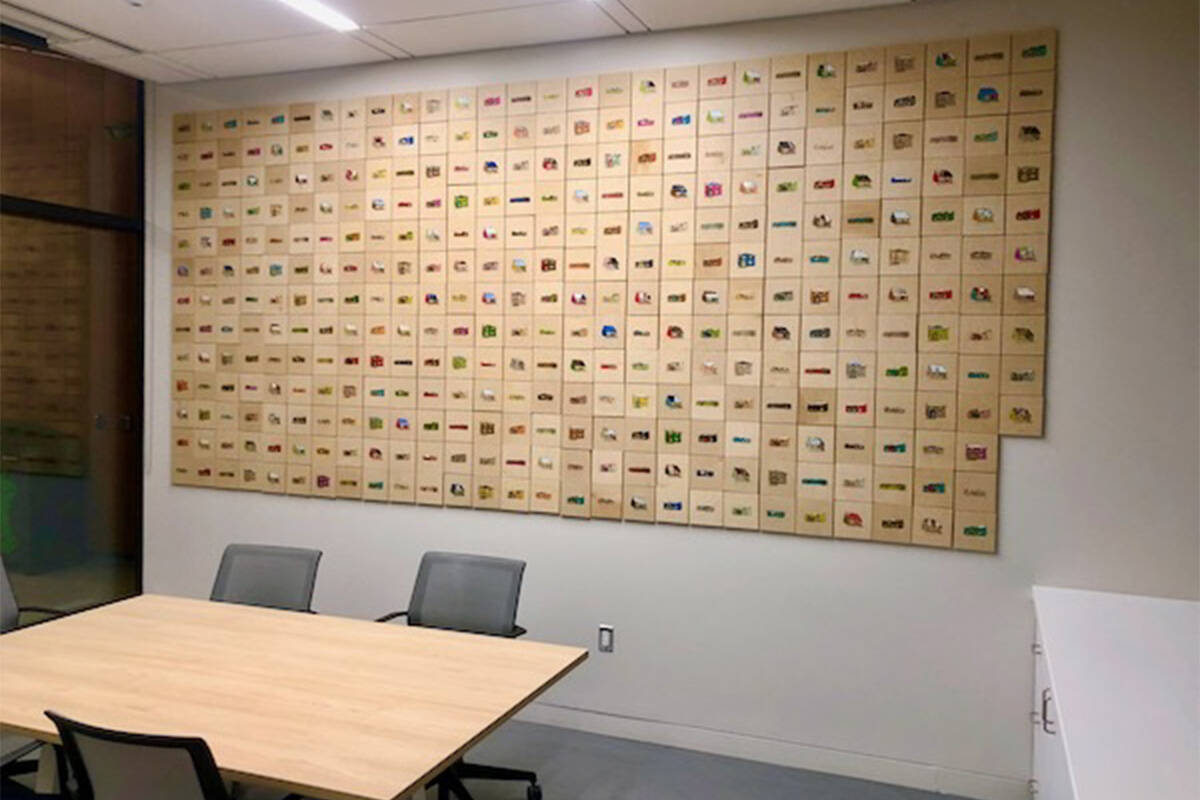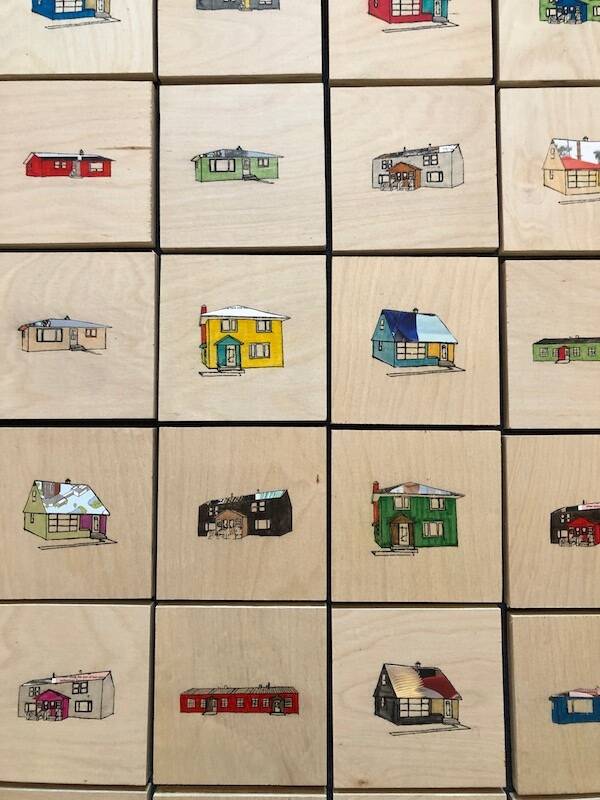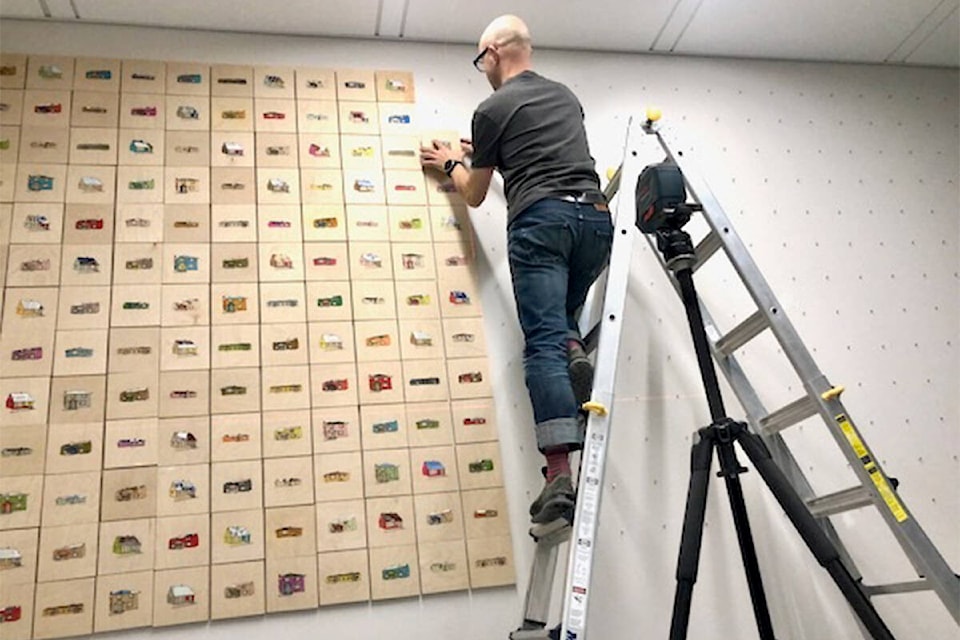They have been the homes of Whitehorse residents for generations and a constant in the city’s ever-changing architectural landscape.
And now they are the focus of a major art installation inside the City of Whitehorse operations building.
Jesse Devost’s Victory Home mosaic features the 361 homes around the city built as military housing in the 1940s and 1950s, ranging from Takhini duplexes to the strawberry box houses in Riverdale to the one-and-a-half-storey homes in Hillcrest and more.
Devost recently installed the mosaic made up of six-by-six inch birch panels, each featuring one of the 361 houses.
“Every house is unique,” Devost said in a Dec. 14 interview, noting over the years owners have made changes to suit their needs. “There’s so much history and so many stories.”
Devost’s interest in the houses goes back about 15 years when he was living in one of the Hillcrest military houses. During his nine years living there, Devost came to admire the sturdy homes.
They featured beautiful hardwood floors, concrete basements and have stood the test of time as have the other styles of military housing that went up in the city in that era. Other designs featured in Devost’s work are the steel lox duplexes also in Hillcrest are another example of the former military housing many Whitehorse residents continue to call home.
“They were extremely well-built,” Devost said.

The city’s call for art submissions for the operations building presented Devost with the opportunity to honour the buildings.
He said he was pleased to have the opportunity and set to work in the summer of 2020, making his way with clipboard-in-hand to the neighbourhoods of Valleyview, Takhini, Riverdale and Hillcrest to jot down notes and sketches of the structures.
Many he spoke to about the project had their own stories about the houses. They were popular with first-time buyers, when housing was less expensive. Many who grew up in Whitehorse have lived in at least one style of military housing or another at some point in their lives.
While Devost couldn’t find a lot of information specific to Whitehorse about the military housing, he was able to track down some information on the housing designs the military was using throughout the country, including the styles seen in Whitehorse.
Although not energy efficiency — heating oil was much cheaper at the time and climate change was not an issue that came up a lot, if at all — Devost said structurally, the homes were well-built.

Despite the uniformity that came with military housing Devost found design and character to highlight in each of the homes. He said they are an important part of Whitehorse’s architectural history.
“I wanted to honour that,” he commented, noting he’s happy to do that through the mosaic of panels.
To both honour the original six designs of military housing in Whitehorse along with the adaptations that have been made to homes over the years, Devost approached the project in two parts.
He began by honouring the six original designs by creating an outline of every house that was then screen-printed on the birch panel. He then worked to honour the character each home has developed over the years with unique colours aimed at reflecting the unique qualities residents have brought to each structure since they were built.
Devost said the constraints from the design of the buildings helped in the creativity of representing the uniqueness of each home.
At first glance at the mosaic, it will appear that each home is different, but Devost said if viewers look closely there are two that do look the same; a bit of a game for those, like his kids, who are fans of Where’s Waldo?
Contact Stephanie Waddell at stephanie.waddell@yukon-news.com
